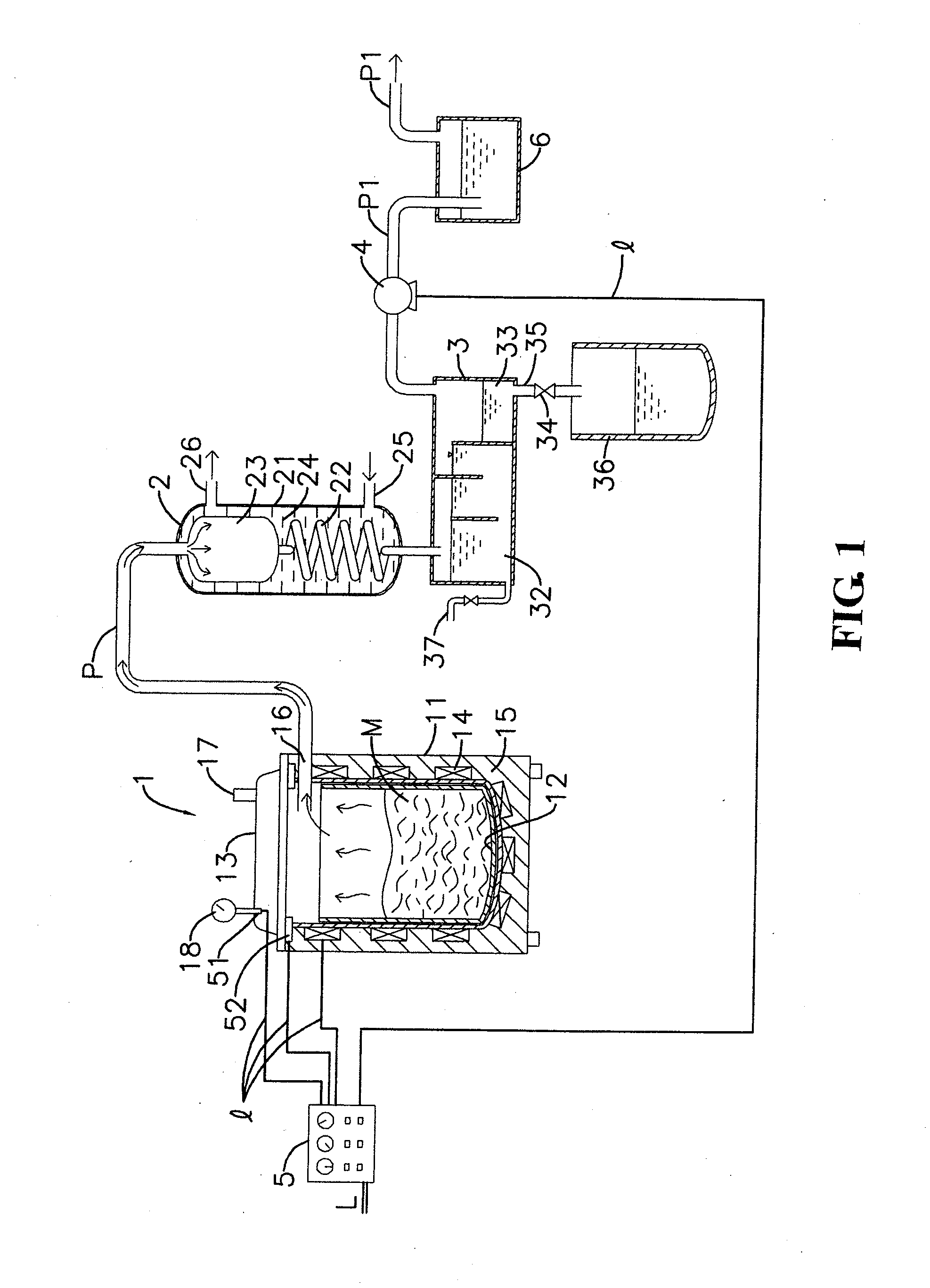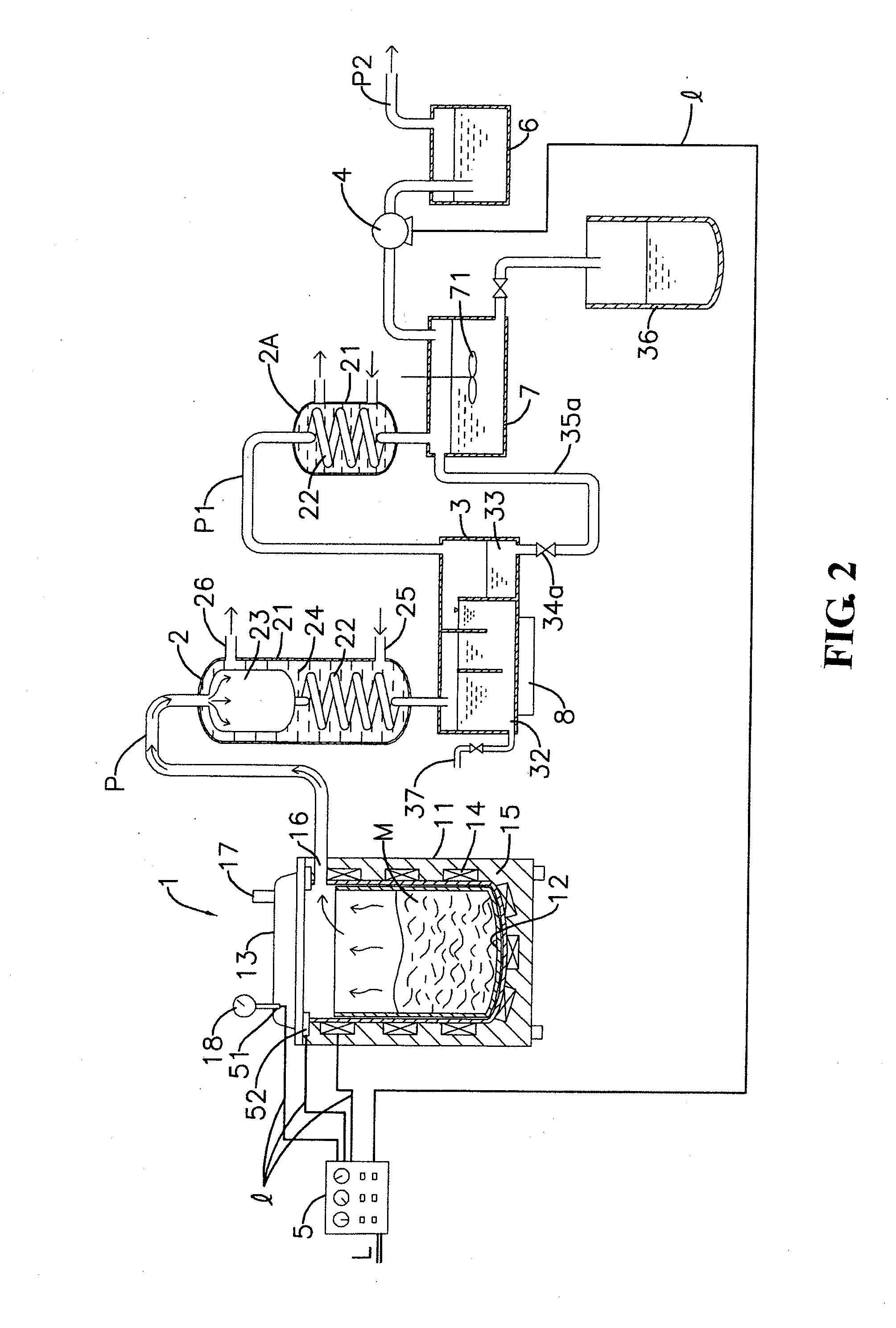Method of extracting essential oil from biomass wastes and a device thereof
a biomass waste and essential oil technology, applied in the direction of fatty-oil/fat production, indirect heating destructive distillation, fatty substance production, etc., can solve the problems of large equipment space, long manufacturing time, waste of energy, etc., and achieve short time, promote evaporation, and reduce internal pressure
- Summary
- Abstract
- Description
- Claims
- Application Information
AI Technical Summary
Benefits of technology
Problems solved by technology
Method used
Image
Examples
Embodiment Construction
[0025]In the drawings, FIG. 1 shows a schematic view of components of a first embodiment of a system which extracts essential oil from biomass wastes, according to the present invention; FIG. 2 shows a schematic view of components of a second embodiment of an essential oil extraction system, according to the present invention; and FIG. 3 shows a schematic view of components of a third embodiment of an essential oil extraction system, according to the present invention.
[0026]A first embodiment of an essential oil extraction system as shown in FIG. 1 comprises a reaction vessel 1, a condenser 2, a water-oil separation tank 3, a suction pump 4 and a control booth 5 which are orderly provided downstream the reaction vessel 1 according to piping.
[0027]The reaction vessel 1 includes an exterior vessel 11 which is surrounded by an electro-thermal device 14 and a thermal insulation humectant 15, a dismountable inner vessel 12 and an air-tight cover 13 which can be tightly covered on an open...
PUM
| Property | Measurement | Unit |
|---|---|---|
| temperature | aaaaa | aaaaa |
| temperature | aaaaa | aaaaa |
| temperature | aaaaa | aaaaa |
Abstract
Description
Claims
Application Information
 Login to View More
Login to View More - R&D
- Intellectual Property
- Life Sciences
- Materials
- Tech Scout
- Unparalleled Data Quality
- Higher Quality Content
- 60% Fewer Hallucinations
Browse by: Latest US Patents, China's latest patents, Technical Efficacy Thesaurus, Application Domain, Technology Topic, Popular Technical Reports.
© 2025 PatSnap. All rights reserved.Legal|Privacy policy|Modern Slavery Act Transparency Statement|Sitemap|About US| Contact US: help@patsnap.com



